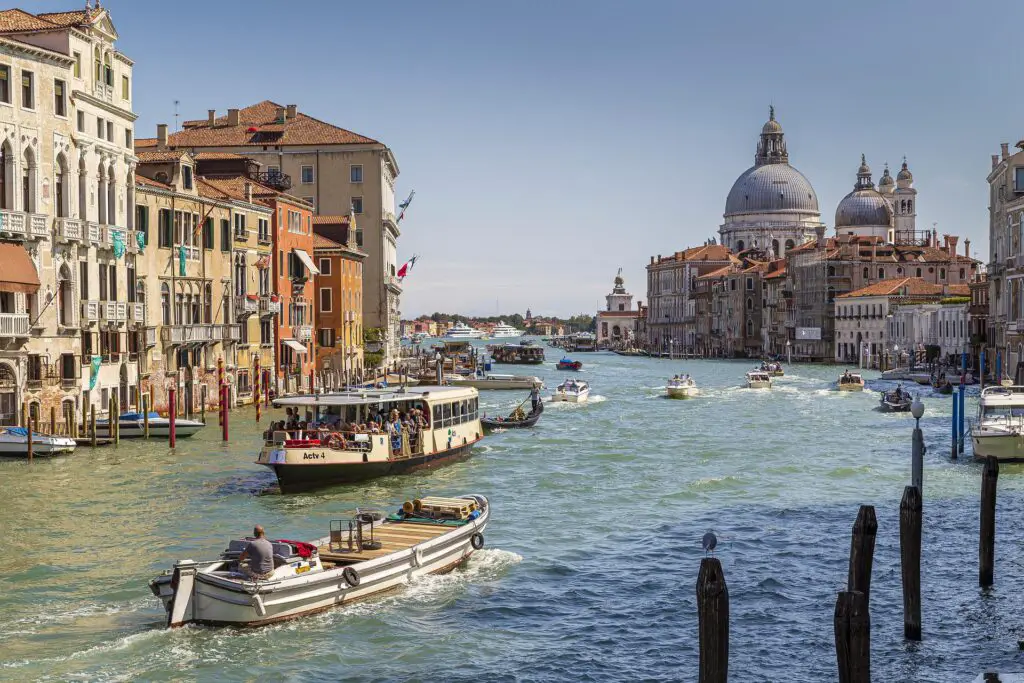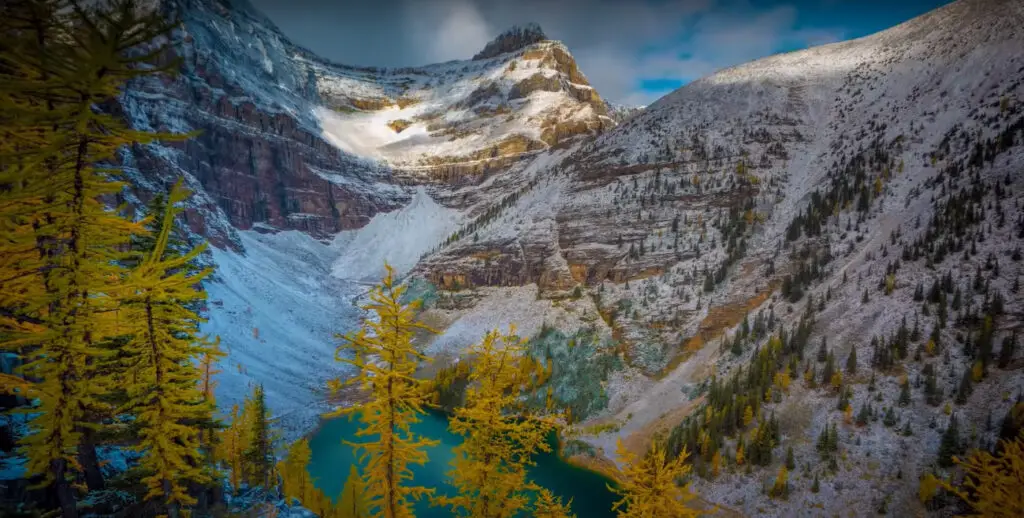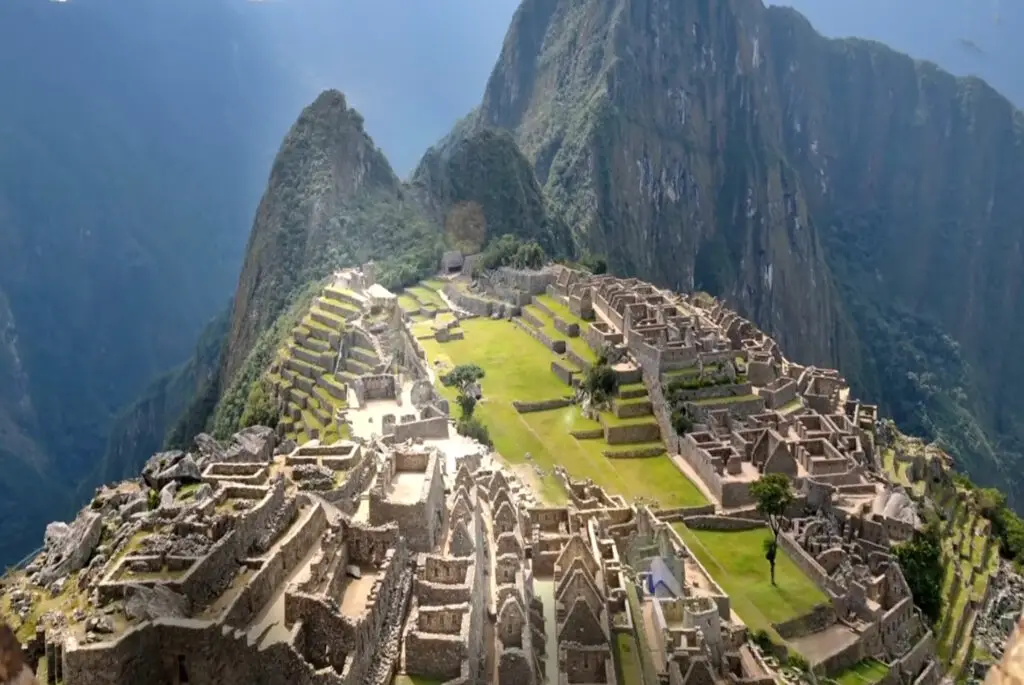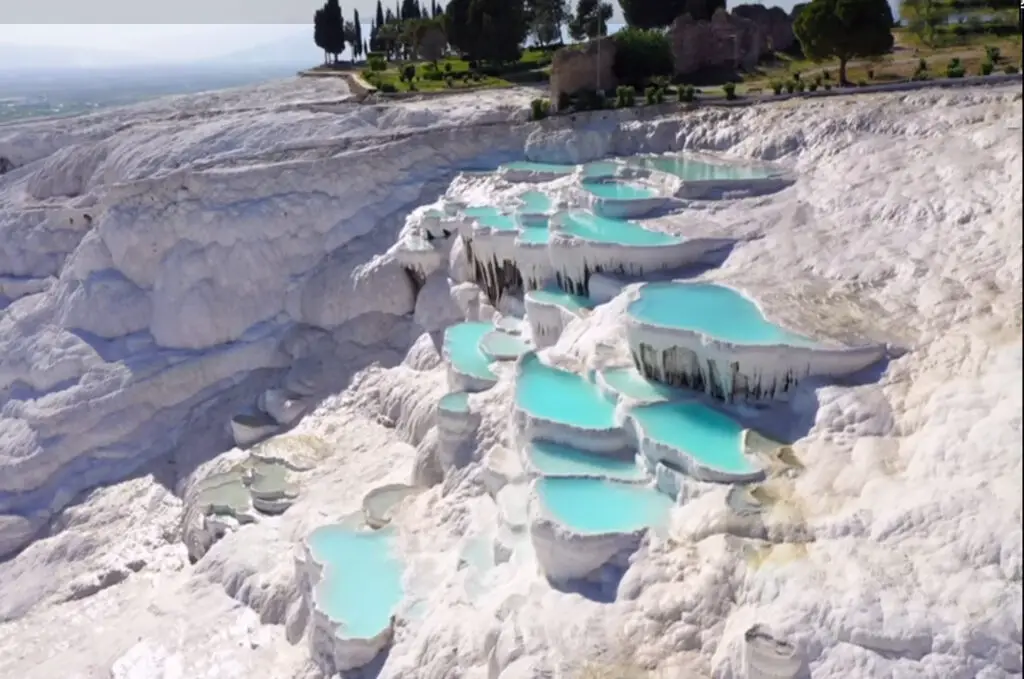Niagara Falls, one of the world’s most iconic natural wonders, is a mesmerizing display of raw power and breathtaking beauty. Located on the border between the United States and Canada, Niagara Falls has captivated visitors from around the globe for centuries. Let’s explore the magnificence of this extraordinary landmark.
The Falls: A Marvel of Nature’s Fury
Comprised of three distinct waterfalls – the Horseshoe Falls, the American Falls, and the Bridal Veil Falls – Niagara Falls is an awe-inspiring spectacle. The Horseshoe Falls, named for its distinctive shape, is the largest and most captivating of the three. Its immense volume of water cascades down with an astonishing force, creating a thunderous roar and a constant mist that fills the air.
The American Falls, located adjacent to the Horseshoe Falls, offers a different vantage point with its striking vertical drop and impressive width. The Bridal Veil Falls, the smallest of the three, appears as delicate veils of water gracefully flowing over the rocks.
The Power of the Falls
The sheer power of Niagara Falls is truly remarkable. Millions of gallons of water plunge over the edge each minute, creating a force that is felt and heard throughout the surrounding area. The thundering sound and the mist rising from the falls create a sensory experience that leaves visitors in awe.
Tourist Attractions and Activities
Niagara Falls offers a multitude of attractions and activities that cater to visitors of all ages. From thrilling boat rides to scenic viewpoints, there is something for everyone to enjoy.
Maid of the Mist: Hop aboard the legendary Maid of the Mist boat tour for an up-close and personal experience of the falls. Feel the mist on your face as you journey through the turbulent waters, getting as close as possible to the thundering Horseshoe Falls.
Journey Behind the Falls: Venture into tunnels that lead to observation decks situated directly behind the falls. Witness the sheer power of the cascading water as it plummets into the abyss.
Niagara Falls State Park: On the American side, Niagara Falls State Park offers a range of activities, including hiking trails, picnic areas, and stunning viewpoints. The park provides an opportunity to explore the natural beauty of the falls and its surrounding landscapes.
Niagara Falls Illumination: As night falls, the falls come alive with an enchanting display of colorful lights. Witness the transformation of the falls into a dazzling spectacle, creating a magical atmosphere.
Beyond the Falls: Exploring the Surrounding Region
While Niagara Falls steals the spotlight, the surrounding region has much more to offer. Visitors can explore charming towns, indulge in gourmet cuisine, and partake in wine tasting at the nearby Niagara Wine Region. Additionally, the Niagara River Gorge provides opportunities for outdoor activities such as hiking, biking, and fishing.
Preserving Nature’s Jewel
Efforts have been made to preserve and protect the natural wonder of Niagara Falls for future generations. Environmental initiatives and conservation projects ensure the sustainability of the falls and its surrounding ecosystem, allowing visitors to witness this extraordinary spectacle for years to come.
How big is the Niagara Falls?
Niagara Falls is an impressive natural wonder with significant size and dimensions. Here are the approximate measurements of the three main waterfalls that comprise the Niagara:
Horseshoe Falls (Canadian Falls):
- Width: About 2,600 feet (792 meters)
- Height: About 167 feet (51 meters)
- Flow rate: Over 600,000 gallons (2.2 million liters) of water per second during peak flow
American Falls:
- Width: About 950 feet (290 meters)
- Height: About 180 feet (55 meters)
- Flow rate: Varies but can reach over 75,000 gallons (284,000 liters) per second during peak flow
Bridal Veil Falls:
- Width: About 181 feet (55 meters)
- Height: About 78 feet (24 meters)
- Flow rate: Varies but typically has a lesser flow compared to the other two falls
These measurements provide a sense of the scale and grandeur of Niagara Falls. The immense volume of water flowing over the falls, especially during peak flow, contributes to the remarkable beauty and power that make Niagara waterfall a world-renowned natural attraction.
Why is Niagara Falls so famous?
Niagara Falls is famous for several reasons, which have contributed to its worldwide recognition and appeal. Here are some key factors that have made Niagara waterFalls such an iconic and renowned destination:
- Natural Beauty: The sheer grandeur and breathtaking beauty of Niagara Falls make it a natural wonder that captures the imagination of visitors. The sight of millions of gallons of water plummeting over the edge with tremendous force and creating a magnificent display of mist and spray is truly awe-inspiring.
- Impressive Size and Power: Niagara waterFalls is known for its incredible volume of water. The combination of three waterfalls—the Horseshoe Falls, American Falls, and Bridal Veil Falls—creates a powerful rush of water that showcases the immense force of nature. The thunderous sound and constant mist add to the dramatic experience.
- International Border: Niagara Falls straddles the border between the United States and Canada, with the Horseshoe Falls primarily located on the Canadian side and the American Falls on the U.S. side. This international aspect adds to the appeal, attracting visitors from both countries and beyond.
- Historical Significance: Niagara Falls has a rich history dating back centuries. Indigenous peoples revered the falls for their spiritual significance, and European explorers and settlers were captivated by their beauty. The falls played a role in the development of the region, including the growth of tourism and hydroelectric power.
- Cultural Symbolism: Niagara Falls has become a cultural symbol associated with power, beauty, and natural wonders. It has been featured in numerous films, literature, artwork, and popular culture references, further contributing to its fame and recognition.
- Tourism and Attractions: The falls’ popularity as a tourist destination has grown over the years, with a wide range of attractions and activities available to visitors. Boat tours, observation decks, walking trails, and other experiences allow people to get up close and personal with the falls, creating memorable moments.
- Accessibility and Location: Niagara Falls is easily accessible, with major cities like Toronto and Buffalo located within a relatively short distance. Its proximity to other attractions, such as the Niagara Wine Region and Niagara-on-the-Lake, adds to its appeal as a destination for tourists.
- Nighttime Illumination and Fireworks: The falls are illuminated with vibrant lights at night, creating a stunning visual spectacle. Additionally, seasonal fireworks displays further enhance the experience and draw crowds throughout the year.
Overall, the combination of its natural beauty, impressive size and power, historical significance, cultural symbolism, and accessible location have all contributed to the fame and popularity of Niagara Falls. It continues to be a bucket-list destination for travelers seeking a remarkable natural wonder and a captivating sensory experience.
Which city is Niagara Falls in?
Niagara Falls is located on the border between the United States and Canada. On the American side, the city closest to Niagara Falls is Niagara Falls, New York. On the Canadian side, the city closest to Niagara Falls is Niagara Falls, Ontario. These cities share the same name as the falls themselves and are popular tourist destinations due to their proximity to the natural wonder.
Is the Niagara Falls a wonder of the world?
While Niagara Falls is not officially recognized as one of the New 7 Wonders of the World, it is widely regarded as one of the most famous and spectacular waterfalls in the world. The New 7 Wonders of the World campaign, which took place between 2000 and 2007, aimed to identify and celebrate the most remarkable natural and man-made structures on Earth. The campaign resulted in the selection of the Great Wall of China, Petra in Jordan, Christ the Redeemer in Brazil, Machu Picchu in Peru, Chichen Itza in Mexico, the Colosseum in Italy, and the Taj Mahal in India as the New 7 Wonders.
Although Niagara Falls did not make the official list, it remains a globally recognized and highly regarded natural wonder, drawing millions of visitors each year. Its stunning beauty, power, and international significance have contributed to its reputation as one of the world’s most iconic waterfalls.
What are 10 facts about Niagara Falls?
- Location: Niagara Falls is located on the border between the United States and Canada, with the falls straddling the international boundary between Niagara Falls, New York, and Niagara Falls, Ontario.
- Three Waterfalls: Niagara Falls consists of three waterfalls: the Horseshoe Falls (also known as the Canadian Falls), the American Falls, and the Bridal Veil Falls.
- Horseshoe Falls: The Horseshoe Falls is the largest and most iconic of the three falls, measuring about 2,600 feet (792 meters) wide. It gets its name from its curved shape resembling a horseshoe.
- American Falls: The American Falls is approximately 950 feet (290 meters) wide and is situated entirely within the United States.
- Bridal Veil Falls: The Bridal Veil Falls, the smallest of the three, is located next to the American Falls and is separated by Luna Island. It is about 181 feet (55 meters) wide.
- Water Flow: Niagara Falls has a massive flow rate, with over 3,160 tons of water cascading over the falls every second during peak flow. This makes it one of the most powerful waterfalls in the world.
- Formation: The falls were formed as a result of glaciers retreating at the end of the last ice age, about 10,000 years ago. The melting ice created the Great Lakes, and the water from Lake Erie flows into Lake Ontario via Niagara Falls.
- Hydroelectric Power: Niagara Falls is a major source of hydroelectric power. Several power plants harness the energy of the falling water, providing electricity to both the United States and Canada.
- Tourism: Niagara Falls is a popular tourist destination, attracting millions of visitors each year. Boat tours, observation decks, and various attractions offer different perspectives and experiences of the falls.
- Illumination: At night, Niagara Falls is illuminated by powerful lights, creating a breathtaking display of colors. The illumination enhances the beauty of the falls and provides a stunning nighttime view.
These facts highlight some of the remarkable characteristics and significance of Niagara Falls, making it an extraordinary natural wonder that continues to captivate people from around the world.
Niagara Falls stands as a testament to the beauty and power of nature. Its awe-inspiring presence and captivating allure have made it a must-see destination for travelers worldwide. Whether you’re seeking adventure, natural beauty, or a sense of wonder, Niagara Falls promises an unforgettable experience that will leave you in awe of nature’s majesty.






